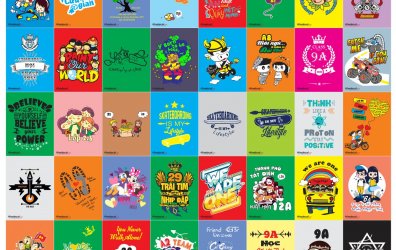M
millerenglish
Just curious — has anyone else noticed that sometimes your pharmacy ads get tons of clicks, but barely any actual customers? I used to think a big number of visitors meant success, but after a few campaigns, I realized it's not that simple. My ads were getting traffic, sure — but not the kind that buys or even sticks around. That's when I started wondering: how do you actually get genuine traffic for pharmacy ads?
When I first started running pharmacy advertisements, my biggest struggle was figuring out who my audience really was. I spent weeks adjusting bids and tweaking visuals, but the traffic just didn't convert. I was getting clicks from random places, sometimes even from people who clearly weren't interested in pharmacy products at all. I kept thinking — maybe I need more reach. But more reach just means more wasted money. It was frustrating, especially when the numbers looked good on paper but didn't translate to real results.
What made it worse was that I couldn't tell which ads were attracting the wrong crowd. I'd run multiple versions of ads, but all the traffic looked the same — empty visits, no purchases, no calls, no engagement. It's easy to lose confidence when you're putting in budget, effort, and time, but nothing moves the needle.
Personal Test and Insight
I decided to start small and experiment instead of throwing more money at the problem. The first big shift I made was focusing on intent-based targeting . Instead of advertising general “health products,” I started crafting ads for specific needs — like “cold and flu medicine near me” or “trusted pharmacy for pain relief.” The difference was immediate. The number of clicks went down, but the quality went way up.
I also noticed that the landing page plays a huge role. I used to send everyone to the homepage, which had everything mixed together. Now I build simple, direct pages that match the ad. For example, if the ad mentions “vitamin supplements,” the landing page only shows supplements, not the entire store. That alone cut my bounce rate in half.
Another insight came from timing. I used to run ads 24/7, but then realized my audience — especially for pharmacy products — was most active in the evenings or early mornings. Adjusting ad schedules saved money and gave me better engagement. It's small tweaks like that which make a big difference over time.
Soft Solution Hint
For anyone struggling like I did, I'd say the key is to chase relevance , not reach. Focus on real people searching for what you sell, not random browsers. Ads don't need to shout to everyone; they just need to speak clearly to the right group. Matching your ad message with what your customer is already looking for changes everything.
One short read that helped me understand this balance better was How to Get Genuine Traffic for Pharmacy Ads . It explains how to filter out unqualified clicks and attract people who are actually ready to engage. I picked up a few solid ideas from it, like using problem-based keywords and building tighter campaign segments instead of broad ones.
After applying some of those tips, my ad spend started working smarter. I wasn't getting “viral” results, but I was getting steady, genuine traffic — visitors who stayed longer, clicked through product pages, and actually converted. It feels like real progress rather than guesswork.
Practical Tips That Worked for Me
After a few months of trial and error, I realized that getting genuine traffic isn't about flashy designs or the biggest budget — it's about alignment. Your ad, your message, and your landing page need to talk to the same kind of person. Once I figured that out, my pharmacy ads became more predictable, less expensive, and actually useful to the people clicking them.
If you're stuck getting empty traffic, start by asking yourself — are my ads speaking to people who actually need my products? Because once you find that right group, even a smaller number of visitors can drive much better results. Anyone else tried a similar approach and seen it work?
When I first started running pharmacy advertisements, my biggest struggle was figuring out who my audience really was. I spent weeks adjusting bids and tweaking visuals, but the traffic just didn't convert. I was getting clicks from random places, sometimes even from people who clearly weren't interested in pharmacy products at all. I kept thinking — maybe I need more reach. But more reach just means more wasted money. It was frustrating, especially when the numbers looked good on paper but didn't translate to real results.
What made it worse was that I couldn't tell which ads were attracting the wrong crowd. I'd run multiple versions of ads, but all the traffic looked the same — empty visits, no purchases, no calls, no engagement. It's easy to lose confidence when you're putting in budget, effort, and time, but nothing moves the needle.
Personal Test and Insight
I decided to start small and experiment instead of throwing more money at the problem. The first big shift I made was focusing on intent-based targeting . Instead of advertising general “health products,” I started crafting ads for specific needs — like “cold and flu medicine near me” or “trusted pharmacy for pain relief.” The difference was immediate. The number of clicks went down, but the quality went way up.
I also noticed that the landing page plays a huge role. I used to send everyone to the homepage, which had everything mixed together. Now I build simple, direct pages that match the ad. For example, if the ad mentions “vitamin supplements,” the landing page only shows supplements, not the entire store. That alone cut my bounce rate in half.
Another insight came from timing. I used to run ads 24/7, but then realized my audience — especially for pharmacy products — was most active in the evenings or early mornings. Adjusting ad schedules saved money and gave me better engagement. It's small tweaks like that which make a big difference over time.
Soft Solution Hint
For anyone struggling like I did, I'd say the key is to chase relevance , not reach. Focus on real people searching for what you sell, not random browsers. Ads don't need to shout to everyone; they just need to speak clearly to the right group. Matching your ad message with what your customer is already looking for changes everything.
One short read that helped me understand this balance better was How to Get Genuine Traffic for Pharmacy Ads . It explains how to filter out unqualified clicks and attract people who are actually ready to engage. I picked up a few solid ideas from it, like using problem-based keywords and building tighter campaign segments instead of broad ones.
After applying some of those tips, my ad spend started working smarter. I wasn't getting “viral” results, but I was getting steady, genuine traffic — visitors who stayed longer, clicked through product pages, and actually converted. It feels like real progress rather than guesswork.
Practical Tips That Worked for Me
- Use intent-focused keywords like “buy,” “near me,” or “trusted” to attract serious shoppers.
- Match ad text with the exact product or service on your landing page.
- Track conversions — not just clicks — to see which campaigns bring real results.
- Run ads during peak search hours (usually evenings or weekends for pharmacy products).
- Test different headlines, but keep the message simple and clear — avoid buzzwords.
- Don't underestimate local targeting — nearby customers often convert faster.
After a few months of trial and error, I realized that getting genuine traffic isn't about flashy designs or the biggest budget — it's about alignment. Your ad, your message, and your landing page need to talk to the same kind of person. Once I figured that out, my pharmacy ads became more predictable, less expensive, and actually useful to the people clicking them.
If you're stuck getting empty traffic, start by asking yourself — are my ads speaking to people who actually need my products? Because once you find that right group, even a smaller number of visitors can drive much better results. Anyone else tried a similar approach and seen it work?




